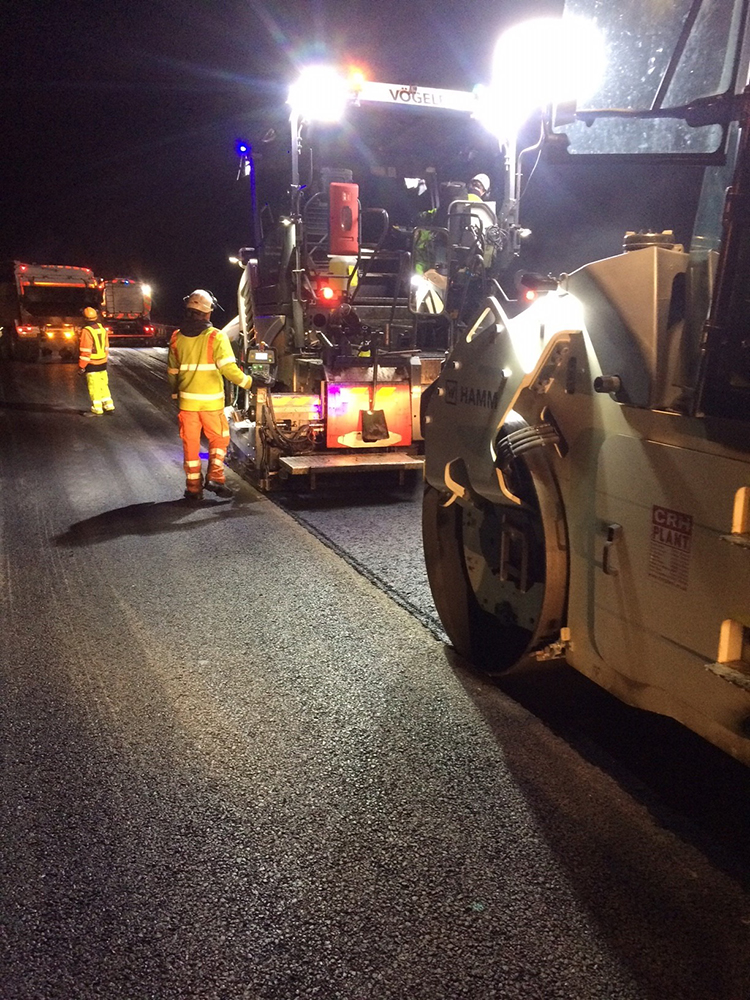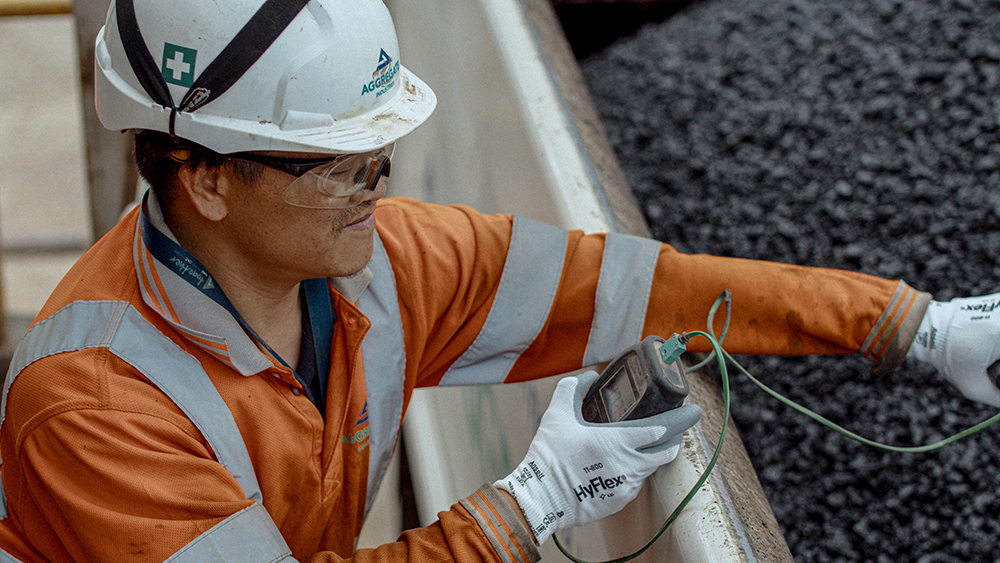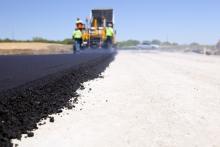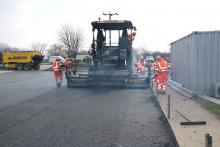
Raman Ojha has quite a tough job. He is in charge of decarbonising construction.
“Construction and roads is one of the most complex and difficult sectors to decarbonise,” said Ojha who heads up the new Shell Roads and Construction division which was created in August 2021. “How materials are produced, how they are transported, how they are used to produce the end product, the whole supply chain is pretty complex.”
However, Ojha, who has been with Shell for 17 years, working in major roles in China, the US and India is up for the challenge: “It makes things more exciting. It would be boring if it was vanilla.”
Ojha, now based in Singapore, comes to the new division from India, where he ran the company’s lubricant business, and prior to that worked extensively in bitumen, including as global marketing head for bitumen.

Construction and Roads is one of several sectors identified by Shell as ‘hard-to-abate’ in terms of carbon emissions. Others include shipping, aviation road freight, and industry.However, Ojha won’t be limiting himself to the challenge of decarbonising bitumen and oil-based products. Bricks and concrete are also on the agenda.
“We are also looking at other low carbon materials,” he said. “We believe there needs to be a good solid pipeline, not just for roads.”
Under pressure
Like any other large corporation that wants to retain shareholders, Shell has committed to being zero carbon by 2050 – in Scopes 1 and 2, which cover direct emissions and those generated by energy used and purchased. But it also wants to show that it is making a difference in the sectors that it serves.
Ojha explains why Shell has opted for a sectoral approach. “The pathways, the solutions and the approach will vary from sector to sector,” he said. “For example, in aviation the big focus is on sustainable fuel. In marine it's pathways to hydrogen, gas, ammonia. In construction the pathways would be very different. There are different options for each sector and there will be different speeds of implementation.”
There is no silver bullet for decarbonising construction, said Ojha. Instead, the sector must look to a combination of regulation from governments, robust standards around carbon emissions that can be used to benchmark between companies and regions, pressure from infrastructure owners or clients and technical innovation from companies like Shell.
In Europe and the West generally, Ojha sees regulation playing a leading role. He cites the examples of English road authority National Highways which has committed to achieving net zero carbon for its own operations by 2030 and net zero road maintenance and construction by 2040.
“The starting point is regulations,” said Ojha. “Governments and highways authorities will have to take steps to establish some form of framework around carbon. Asset owners need to start establishing demand for low- carbon solutions. That will give confidence to suppliers to invest in the infrastructure they need.”
In markets such as China and other parts of Asia, pressure to decarbonise is likely to come from another direction: the big corporates. Ohja gives the example of one large construction sector company that Shell worked with.
“They were manufacturing in Indonesia and shipping to Australia. And although there is no regulation in Indonesia, they wanted to lower their carbon footprint, so they started using biofuels,” he said. “That's where we will see the difference.”
Ojha did not want to comment on the impact of Ukraine on supply chains, but he did talk about possible longer-term changes from a carbon economy perspective.
With the parallel pressures of disrupted supply chains due to the Ukraine conflict and rising awareness of carbon emissions, can construction expect its supply chains to get shorter?
“If countries and companies become conscious of carbon footprint, then the supply chain would also evolve. Instead of bringing materials all the way from China to Europe, it may make sense to source them nearer to home,” he said. “It depends on how the carbon tax develops, how carbon is costed.”
The collaboration theme
Shells’ story about biogenic asphalt being laid in the UK is a one for the new Construction and Roads Division. It involves a partnership with Aggregate Industries, the use of a plant-derived material to replace part of the bitumen binder, and of course a lower carbon footprint.

“No one single player can resolve things on its own. We need to bring players together, players like Aggregate Industries that have a strong desire to experiment with technology,” said Ojha. “They are very critical as players because they make it happen. Shell does the research and innovation but we need a partner who can bring innovation into the roads.”
This is not a new concept. Shell’s partnership with Aggregate Industries stretches back between eight and 10 years, said Ojha. However, collaboration between stakeholders is a strong decarbonisation theme and hence worth emphasising for Shell – or any other company wanting to demonstrate their commitment to the cause.
There are other low-carbon roads technologies in the pipeline to follow on from the biogenic asphalt. Shell is working on a bitumen that ages more slowly than the standard binder, and other ideas too, said Ojha.
As for low-carbon bricks, laboratory experiments are currently underway on pyrogenic bricks. And Ojha hints about news relating to low-carbon concrete which could be breaking in couple of months’ time.
While news of advancements, such as biogenic roads in Oxfordshire, are surely a step in the right direction, there are still huge barriers to any such technology spreading in any significant way. Ojha acknowledged that for local authorities that are still limited by capital budgets, spending more on a low-carbon solution is a difficult ask.
“We cannot compare dollars/tonne with dollars/tonne. The approach should be to look at a whole life cycle basis,” he said. I believe there will be an evolution in how we look at budgets. If you start looking at a longer horizon, keeping in mind how maintenance cycles work, the choices made would be different. Slowly, governments and authorities will move towards the idea of whole life cost and whole life carbon.”










